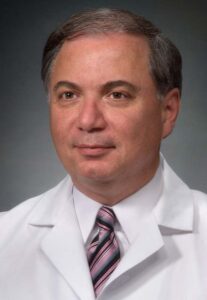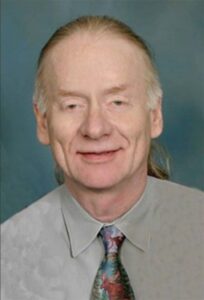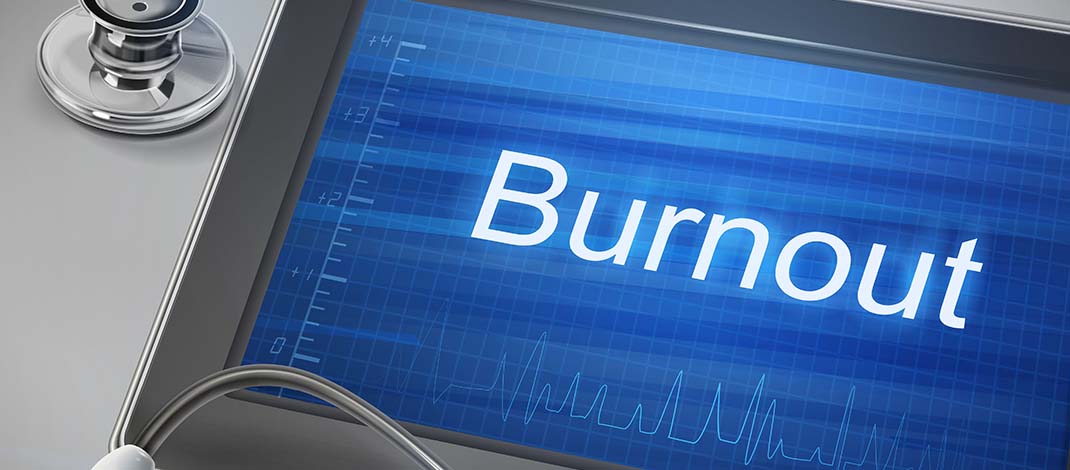Burnout exacerbates among health providers: 40% of nurses and 20% of physicians considering early retirement or quitting within the next two years
By Deborah Jeanne Sergeant
Everyone needs a break from the stressors of work from time to time.
tEvery weekend off, a few extra days off occasionally and two weeks’ vacation a year helps most people feel refreshed and ready to get back to work.
But healthcare is different.

The systemic, deep-rooted issues in healthcare have led to an industry-wide state of chronic burnout: demanding hours; mandatory overtime; increased workload; continual staffing problems; stressful and at times hazardous working conditions; ongoing professional demands and sometimes ungrateful and entitled patients and family members.
Then bring in the pandemic, which worsened most of those issues and added a few more, such as supply and equipment shortages; more stringent use of personal protective equipment; politicization of COVID-19 vaccination; higher workplace hazards; and additional hygiene protocols.
It is little wonder that of the 40% of nurses and 20% of physicians considering early retirement or quitting within the next two years, about one-third plan to reduce their working hours in the meantime to improve their quality of life.
This factor will only heap additional stress on the workers they leave behind, since the replacement rate for nurses and physicians is at an all-time low as the baby boomer generation continues to retire.
The Bureau of Labor Statistics predicts a 16% increase in demand for healthcare workers from 2020 to 2030, which is much faster than the average for all occupations. The US needs about 1.1 million new nurses by the end of 2022 to fill the roles of retiring nurses.
Mitigating the effects of burnout is not easy or simple, according to pediatrician Robert Dracker, president of the Onondaga County Medical Society.
“You cannot prepare anyone regardless of what they do in healthcare,” he said. “Their experiences will be varied. The pressures are going to be quite variable. Through this whole ordeal [with the coronavirus pandemic], the nurses have had to deal with the most pressure. But you can’t teach how to avoid burnout.”
He added that recommending healthcare providers engage in self-care is nearly counterintuitive to their job’s demands. Dracker also believes that a generational shift has contributed to the problem in that fewer younger healthcare providers want it to work more than 40 hours. More physicians want to go into specialties, most of which pay more and require only office hours.
“We’ve undergone a philosophical shift in our outlook on medicine,” Dracker said. “It’s not like the old days, where you did what took and worked as long as you could. I loved doing pediatrics, but my day doesn’t end when someone else’s ends. No one wants to sacrifice their lives. Given the pressure of practice, physicians are retiring before 60 and going into a career that’s not direct care-oriented.”
He added that insurance reimbursement in billing codes have not increased in 11 years, unlike a hospital or practice’s overhead costs. He feels like finances in healthcare is like a casino, where “you can’t beat the house. They can increase premiums if they see reduced profits. Patients have no choice but to pay higher copays or deductibles, which sticks it to the patients. They see the doctor as the bad buy, but the doctor isn’t pocketing it.”
Meanwhile, providers must cope with rising regulations and quality thresholds for the same or even less money.
Dracker added that many young people do not think that going into healthcare is worth it since the average debt is $400,000 for physicians. When they enter residency, they make about $50,000 annually. While this rises to about $100,000 while practicing (depending upon the physician’s area of practice), it still makes paying off their student loan debt challenging.
“They can never catch up,” he said. “Now loans are repayable from day one. It used to be a few years they had without interest. How can you walk into a low-paying job? You can’t do it.”
Changes in the recent past have made providing healthcare more challenging, including the electronic health record systems, also called electronic medical records (EMRs).
“Electronic medical records are a big cause of frustration. It’s become more of an effort to do what the computer needs to get reimbursement. [It feels like] two hours on the computer for one hour with a patient.”
Physician Corliss Varnum, who retired from
Port City Family Medicine in Oswego in March.
“EMRs are a big cause of frustration,” said physician Corliss Varnum, retired from Port City Family Medicine in Oswego in March. “It’s become more of an effort to do what the computer needs to get reimbursement.”
He quipped that it feels like “two hours on the computer for one hour with a patient.”
Regardless of a patient’s background and the physician’s knowledge of the patient, each visit includes asking a series of questions that must be answered on the EMR.

“I could get things done talking into a tape recorder and have someone transcribe it but I can’t do that anymore,” Varnum said. “I’m up late at night working on the computer more often than not.
It’s not just my profession, but home health aides, outpatient physical therapists and the whole industry. There’s a shortage of physicians because of this. It’s the cause of early retirement for some.”
While EMRs have improved the accuracy and accessibility of medical records, they have also placed additional burdens on providers’ time.
The problem of burnout has spurred Le Moyne College to add a 15-hour course, The Healer’s Arts, a “reflective process for students to start recognizing they’re not the only ones in this situation,” said Mary Springston, former director of the program and current director of the HRSA primary care training program at Le Moyne’s PA department. “When they think they’re out there alone, it makes it hard.”
Springston is clinical associate professor and director of the Clinical Advancement Science Center.
She believes that the concept of team-based care can also help prevent burnout, along with equipping students with strategies to better cope with their workplace stressors, such as physical exercise, meditation, appropriate sleep and a healthful diet.
“If the healthcare providers understand themselves better in the discovery model, it really can translate to better patient care and better empathy and compassion,” Springston said.



